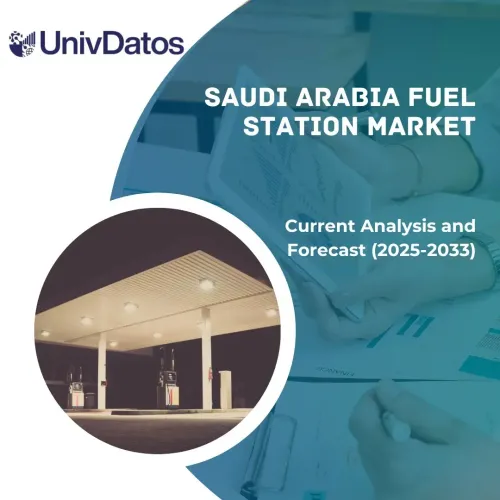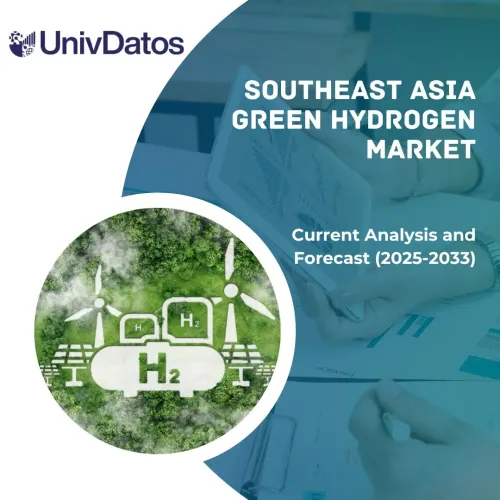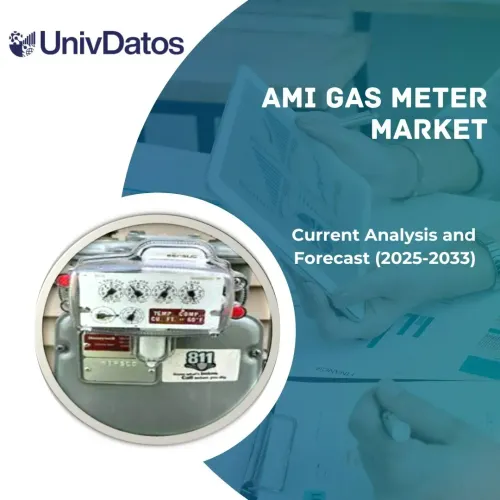- Startseite
- Über uns
- Industrie
- Dienstleistungen
- Lesen
- Kontaktieren Sie uns
Cleantech-Markt: Aktuelle Analyse und Prognose (2025-2033)
Fokus auf Produkttyp (Biokraftstoffe, Elektrofahrzeuge, Grüne Materialien, Recyclingdienste, Smart-Grid-IT-Dienstleistungen und Solardienstleistungen); Anwendung (Industrie, Transport, Fertigung, Versorgungsunternehmen, Chemikalien, Elektronik, Landwirtschaft und Sonstige); Region/Land.
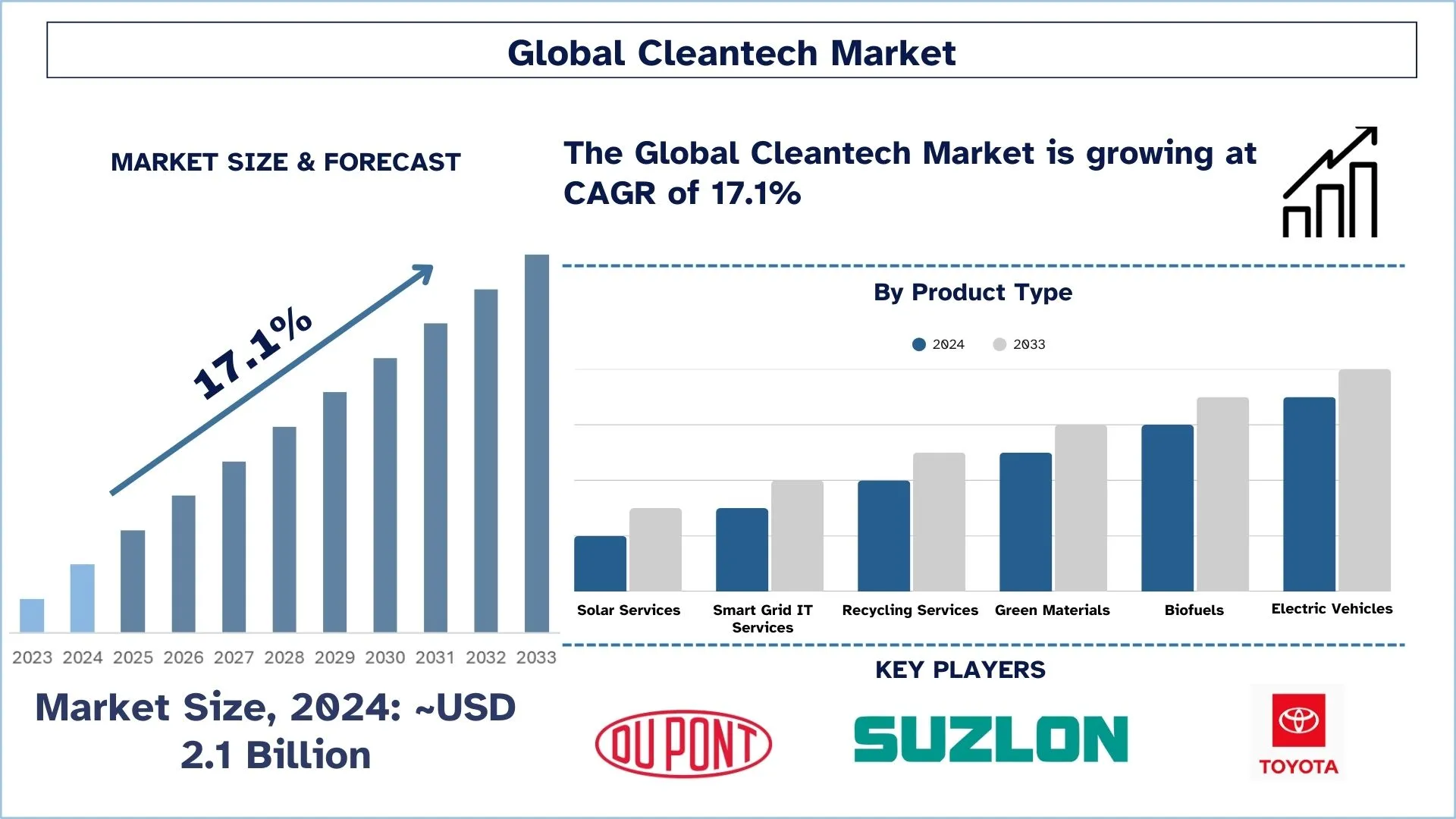
Cleantech Marktgröße und Prognose
Der Cleantech-Markt wurde im Jahr 2024 auf etwa 2,1 Milliarden USD geschätzt und wird aufgrund der steigenden Nutzung nachhaltiger Produkte voraussichtlich im Prognosezeitraum (2025-2033) mit einer beträchtlichen durchschnittlichen jährlichen Wachstumsrate (CAGR) von rund 17,1 % wachsen.
Cleantech Marktanalyse
Der Cleantech-Markt ist ein schnell wachsender Sektor, der sich auf Technologien und Lösungen konzentriert, die die Umweltbelastung reduzieren und die Ressourceneffizienz verbessern. Dieser Markt umfasst eine breite Palette von Branchen, darunter erneuerbare Energien (Solar, Wind und Wasserkraft), Energieeffizienz, Elektrofahrzeuge, intelligente Netze und nachhaltige Landwirtschaft. Mit dem wachsenden globalen Bewusstsein für den Klimawandel und die ökologische Nachhaltigkeit steigt die Nachfrage nach sauberen Technologien deutlich. Regierungen weltweit setzen Richtlinien und Anreize um, um die Einführung von Cleantech-Lösungen zu fördern und das Wachstum des Marktes weiter anzukurbeln. Investitionen sowohl aus dem privaten als auch aus dem öffentlichen Sektor fließen weiterhin in die Entwicklung und den Einsatz innovativer Technologien, wodurch sich der Cleantech-Markt als wichtiger Akteur beim Übergang zu einer nachhaltigen Zukunft positioniert.
Der Haupttreiber des Cleantech-Marktes ist die dringende Notwendigkeit, den Klimawandel zu mildern und die Treibhausgasemissionen zu reduzieren. Regierungen und internationale Organisationen setzen sich ehrgeizige Ziele für die Reduzierung von Kohlenstoffemissionen und die Einführung erneuerbarer Energien, wodurch ein unterstützendes regulatorisches Umfeld für die Cleantech-Entwicklung geschaffen wird. Fortschritte in der Technologie haben saubere Technologien auch effizienter und kostengünstiger gemacht, wodurch sie zu praktikablen Alternativen zu traditionellen fossilen Brennstoffen geworden sind. Auch das Verbraucherbewusstsein und die Nachfrage nach nachhaltigen Produkten steigen, was Unternehmen dazu zwingt, Cleantech-Lösungen einzuführen und in sie zu investieren. Finanzielle Anreize wie Steuergutschriften und Subventionen ermutigen Unternehmen und Einzelpersonen zusätzlich, auf sauberere Energie und effizientere Technologien umzusteigen.
Cleantech Markttrends
In diesem Abschnitt werden die wichtigsten Markttrends erörtert, die die verschiedenen Segmente des Cleantech-Marktes beeinflussen, wie sie von unseren Forschungsexperten identifiziert wurden.
Regierungsrichtlinien zur Unterstützung der Cleantech-Industrie
Regierungsrichtlinien und Anreize sind entscheidende Triebkräfte des Cleantech-Marktes und schaffen einen regulatorischen Rahmen, der die Entwicklung und Einführung sauberer Technologien unterstützt. Richtlinien wie Mandate für erneuerbare Energien, Steuergutschriften, Einspeisevergütungen und Emissionshandelssysteme bieten finanzielle Anreize für Unternehmen und Einzelpersonen, in Cleantech-Lösungen zu investieren. Diese Richtlinien reduzieren nicht nur die Kosten für Cleantech-Produkte und -Dienstleistungen, sondern schaffen auch eine Marktnachfrage nach ihnen. Beispielsweise verlangen Mandate für erneuerbare Energien von Versorgungsunternehmen, einen bestimmten Prozentsatz ihres Stroms aus erneuerbaren Quellen zu erzeugen, wodurch Investitionen in Solar-, Wind- und andere Projekte für erneuerbare Energien gefördert werden. Steuergutschriften und Anreize für energieeffiziente Produkte ermutigen die Verbraucher, sich für energieeffiziente Geräte und Fahrzeuge zu entscheiden, wodurch die Einführung von Cleantech-Lösungen weiter vorangetrieben wird. Darüber hinaus schaffen Vorschriften wie Emissionsstandards und Anforderungen an die Energieeffizienz einen Markt für Cleantech-Lösungen, indem sie Unternehmen dazu anregen, sauberere Technologien einzuführen, um die Vorschriften einzuhalten.
Ein Paradebeispiel für staatliche Maßnahmen, die den Cleantech-Markt vorantreiben, ist das Erneuerbare-Energien-Gesetz (EEG) in Deutschland, das Einspeisevergütungen für Erzeuger erneuerbarer Energien garantiert. Diese Politik hat das rasche Wachstum erneuerbarer Energien in Deutschland gefördert und das Land zu einem weltweit führenden Unternehmen bei der Einführung erneuerbarer Energien gemacht.
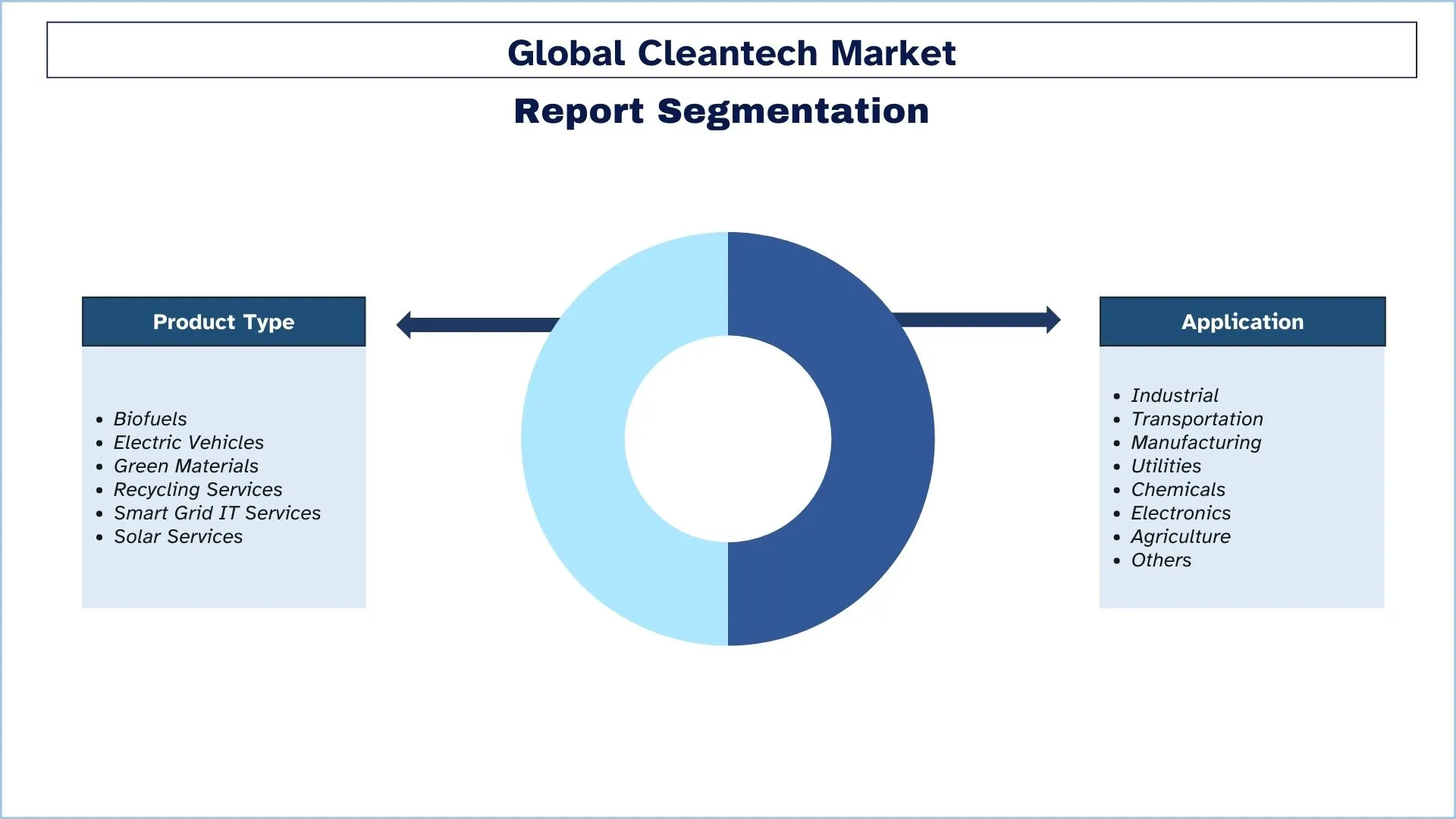
Cleantech Industrie Segmentierung
Dieser Abschnitt bietet eine Analyse der wichtigsten Trends in jedem Segment des globalen Cleantech-Berichts sowie Prognosen auf globaler, regionaler und Länderebene für 2025-2033.
Das Segment EV und Solardienstleistungen hält den größten Anteil am Cleantech Markt.
Basierend auf dem Produkttyp ist der Cleantech-Markt in Biokraftstoffe, Elektrofahrzeuge, grüne Materialien, Recyclingdienste, Smart Grid IT-Dienste und Solardienstleistungen unterteilt. Das Segment der Elektrofahrzeuge wird im Prognosezeitraum voraussichtlich eine beträchtliche Wachstumsrate aufweisen. Durch die Reduzierung des Verbrauchs fossiler Brennstoffe und folglich der Emission von Treibhausgasen bei der Ausführung von Transportaktivitäten. Im Kampf gegen den Klimawandel koordinieren sich Elektrofahrzeuge mit den Ladestationen erneuerbarer Energiequellen, um Solar-, Wind- oder Smart Grid Systeme zu unterstützen. Dies steht zum Teil im Einklang mit dem Engagement des Staates für saubere Technologien und erneuerbare Energiequellen sowie für die Entwicklung der ökologischen Nachhaltigkeit der Cleantech-Industrie durch die Unterstützung von Innovationen in den Bereichen Energiespeicherung, Batterien und Effizienzlösungen. In all diesen Fällen fordern Regierungen und Industrie eine kohlenstofffreie Bilanz und treiben weiterhin Investitionen und Entwicklungen im Bereich der Elektrofahrzeuge voran.
Es wird erwartet, dass das Automobil- und Industriesegment eine höhere CAGR als der Cleantech-Markt aufweisen wird.
Basierend auf der Anwendung ist der Cleantech-Markt in Industrie, Transport, Fertigung, Versorgungsunternehmen, Chemie, Elektronik, Landwirtschaft und Sonstige unterteilt. Es wird erwartet, dass das Automobil- und Industriesegment im Prognosezeitraum eine beträchtliche Wachstumsrate aufweisen wird. Die Industrie- und Automobilsegmente werden maßgeblich durch Fortschritte in der Automatisierung und die Integration intelligenter Technologien angetrieben. Im Industriesektor steigert die Einführung von Industrie 4.0-Technologien, einschließlich des Internets der Dinge (IoT), künstlicher Intelligenz (KI) und Robotik, die Effizienz, Produktivität und Sicherheit. Diese Technologien ermöglichen Echtzeitüberwachung, vorausschauende Wartung und optimierte Abläufe, was zu Kosteneinsparungen und erhöhter Wettbewerbsfähigkeit führt. Im Automobilsegment ist der Wandel hin zu Elektrofahrzeugen (EVs) und autonomen Fahrtechnologien ein wesentlicher Treiber. Die Nachfrage der Verbraucher nach saubereren, effizienteren Transportoptionen, gepaart mit strengen Emissionsvorschriften und staatlichen Anreizen, beschleunigt die Entwicklung und Einführung von Elektrofahrzeugen. Darüber hinaus verändern Fortschritte in der Batterietechnologie, eine verbesserte Ladeinfrastruktur und Innovationen in den Bereichen Fahrzeugkonnektivität und autonome Fahrsysteme die Automobilindustrie und machen sie nachhaltiger und technologisch fortschrittlicher.
APAC hat im Jahr 2024 einen bedeutenden Marktanteil.
Die Region Asien-Pazifik (APAC) erlebt ein deutliches Wachstum auf dem Cleantech-Markt, das durch rasche Urbanisierung, Industrialisierung und wirtschaftliche Entwicklung angetrieben wird. Die Regierungen in der Region setzen unterstützende Richtlinien und regulatorische Rahmenbedingungen um, um die Einführung sauberer Technologien zu fördern. Länder wie China, Indien und Japan investieren stark in Projekte für erneuerbare Energien, insbesondere in Solar- und Windkraft, um ihren steigenden Energiebedarf zu decken und gleichzeitig die Kohlenstoffemissionen zu reduzieren. Darüber hinaus treiben ein steigendes Umweltbewusstsein bei Verbrauchern und Unternehmen, gepaart mit technologischen Fortschritten und sinkenden Kosten für Technologien für erneuerbare Energien, das Wachstum des Cleantech-Marktes in der APAC-Region voran. Die steigende Nachfrage nach Elektrofahrzeugen, energieeffizienten Lösungen und nachhaltiger Infrastruktur trägt zusätzlich zur Expansion des Marktes bei und positioniert die APAC-Region als wichtigen Akteur beim globalen Übergang zu einer nachhaltigen Zukunft.
China dominiert den APAC Cleantech Markt
Das Marktumfeld für Cleantech in China ist sehr dynamisch, was vor allem auf die günstigen politischen Rahmenbedingungen und die steigenden Investitionen in die CleanTech-Sektoren zurückzuführen ist. Es gibt ein starkes Ziel, die Kohlenstoffemissionen zu senken und auf sauberere Energiequellen umzusteigen, um im Land eine führende Position in einem klima- und unternehmensfreundlichen Geschäftsumfeld einzunehmen. Dank der Ziele einer nachhaltigen Entwicklung ist China bestrebt, seine allgemeine Kompetenz in den Bereichen Solar, Wind und Elektrofahrzeuge zu verbessern und so positiv zur Veränderung der Welt hin zu einer kohlenstoffarmen Wirtschaft beizutragen.
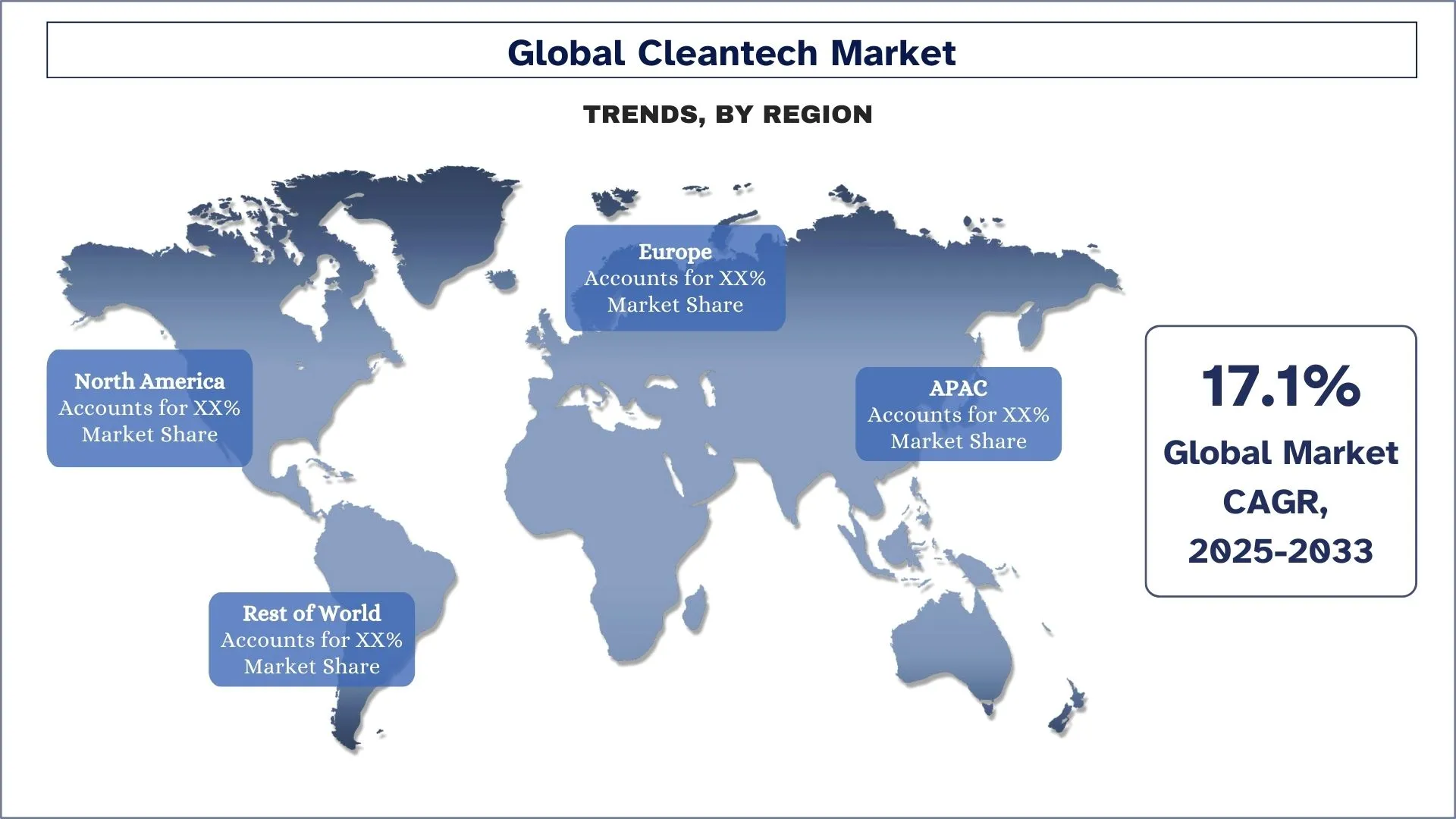
Cleantech Industrie Wettbewerbsumfeld
Der Cleantech-Markt ist wettbewerbsintensiv und umfasst mehrere globale und internationale Akteure. Die wichtigsten Akteure verfolgen unterschiedliche Wachstumsstrategien, um ihre Marktpräsenz zu verbessern, wie z. B. Partnerschaften, Vereinbarungen, Kooperationen, neue Produkteinführungen, geografische Expansionen sowie Fusionen und Übernahmen.
Top Cleantech Unternehmen
Einige der wichtigsten Akteure auf dem Markt sind Yingli Green Energy Holdings, Suzlon Energy, Dupont, Toyota Motors, Syntec Biofuels, GE Energy, Siemens Water Technologies, Novozymes, Solazyme und Panasonic.
Aktuelle Entwicklungen auf dem Cleantech-Markt
Im September 2024 starteten die IBM Corporation und das Entwicklungsprogramm der Vereinten Nationen neue interaktive Modelle zum Thema Energie innerhalb der globalen GeoHub-Plattform des Entwicklungsprogramms der Vereinten Nationen. Diese fortschrittlichen Lösungen nutzen Technologien wie die Datenplattform und IBM Watsonx KI, um Nutzern, von nationalen und kommunalen politischen Entscheidungsträgern bis hin zur Öffentlichkeit, die Möglichkeit zu geben, komplexe Energieherausforderungen mithilfe fortschrittlicher künstlicher Intelligenz (KI) zu analysieren. Durch den Zugang zu einer breiten Palette von Ressourcen erleichtern diese Lösungen datengestützte Entscheidungen zur Unterstützung einer gerechten Energiewende.
Im August 2024 ging Ørsted A/S eine Partnerschaft mit Mission Clean Energy ein, einem Entwickler von erneuerbaren Energien und Speichern im Versorgungsmaßstab, um vier eigenständige Batteriespeicheranlagen (BESS) im Mittleren Westen voranzutreiben. Die Partnerschaft mit Mission Clean Energy stärkt die Entwicklungsbemühungen von Ørsted A/S und erweitert die Palette der Technologien, die Versorgungsunternehmen und anderen Kunden zur Verfügung stehen.
Cleantech Marktbericht Abdeckung
Details | |
Basisjahr | 2024 |
Prognosezeitraum | 2025-2033 |
Wachstumsdynamik | Beschleunigung mit einer CAGR von 17,1 % |
Marktgröße 2024 | 2,1 Milliarden USD |
Regionale Analyse | Nordamerika, Europa, Asien-Pazifik, Rest der Welt |
Wichtigste Beitragsregion | Es wird erwartet, dass APAC im prognostizierten Zeitraum die höchste CAGR aufweisen wird. |
Wichtigste abgedeckte Länder | USA, Kanada, Deutschland, Frankreich, Großbritannien, Spanien, Italien, China, Japan und Indien |
Yingli Green Energy Holdings, Suzlon Energy, Dupont, Toyota Motors, Syntec Biofuels, GE Energy, Siemens Water Technologies, Novozymes, Solazyme und Panasonic | |
Berichtsumfang | Markttrends, Treiber und Beschränkungen; Umsatzschätzung und -prognose; Segmentierungsanalyse; Angebots- und Nachfrageanalyse; Wettbewerbsumfeld; Unternehmensprofilierung |
Abgedeckte Segmente | Nach Produkttyp; Nach Anwendung; Nach Region/Land |
Gründe für den Kauf des Cleantech Marktberichts:
Die Studie umfasst eine Marktdimensionierungs- und Prognoseanalyse, die von authentifizierten wichtigen Branchenexperten validiert wurde.
Der Bericht bietet einen schnellen Überblick über die Gesamtleistung der Branche auf einen Blick.
Der Bericht umfasst eine detaillierte Analyse der wichtigsten Branchenkollegen mit einem primären Fokus auf wichtige Unternehmenskennzahlen, Produktportfolios, Expansionsstrategien und aktuelle Entwicklungen.
Detaillierte Untersuchung der Triebkräfte, Beschränkungen, wichtigsten Trends und Chancen, die in der Branche vorherrschen.
Die Studie deckt den Markt umfassend über verschiedene Segmente hinweg ab.
Detaillierte regionale Analyse der Branche.
Anpassungsoptionen:
Der globale Cleantech-Markt kann je nach Bedarf oder einem anderen Marktsegment weiter angepasst werden. Darüber hinaus versteht UnivDatos, dass Sie möglicherweise Ihre eigenen geschäftlichen Anforderungen haben; zögern Sie daher nicht, uns zu kontaktieren, um einen Bericht zu erhalten, der Ihren Anforderungen vollständig entspricht.
Inhaltsverzeichnis
Forschungsmethodik für die Cleantech-Marktanalyse (2023-2033)
Wir haben den historischen Markt analysiert, den aktuellen Markt geschätzt und den zukünftigen Markt des globalen Cleantech-Marktes prognostiziert, um seine Anwendung in wichtigen Regionen weltweit zu bewerten. Wir haben umfassende Sekundärforschung durchgeführt, um historische Marktdaten zu sammeln und die aktuelle Marktgröße zu schätzen. Um diese Erkenntnisse zu validieren, haben wir zahlreiche Ergebnisse und Annahmen sorgfältig geprüft. Darüber hinaus haben wir ausführliche Primärinterviews mit Branchenexperten entlang der Cleantech-Wertschöpfungskette geführt. Nach der Validierung der Marktzahlen durch diese Interviews haben wir Top-Down- und Bottom-Up-Ansätze verwendet, um die Gesamtmarktgröße zu prognostizieren. Anschließend setzten wir Marktaufschlüsselungs- und Datentriangulationsmethoden ein, um die Marktgröße von Industriesegmenten und -untersegmenten zu schätzen und zu analysieren.
Markt-Engineering
Wir haben Datentriangulationstechniken eingesetzt, um die Gesamtmarktschätzung zu finalisieren und präzise statistische Zahlen für jedes Segment und Untersegment des globalen Cleantech-Marktes abzuleiten. Wir haben die Daten in mehrere Segmente und Untersegmente aufgeteilt, indem wir verschiedene Parameter und Trends analysiert haben, darunter Produkttyp, Anwendung und Regionen innerhalb des globalen Cleantech-Marktes.
Das Hauptziel der Global Cleantech Market Study ist
Die Studie identifiziert aktuelle und zukünftige Trends im globalen Cleantech-Markt und bietet strategische Einblicke für Investoren. Sie hebt die regionale Marktattraktivität hervor und ermöglicht es den Akteuren der Branche, unerschlossene Märkte zu erschließen und einen First-Mover-Vorteil zu erzielen. Weitere quantitative Ziele der Studien sind:
Marktgrößenanalyse: Bewertung der aktuellen und prognostizierten Marktgröße des globalen Cleantech-Marktes und seiner Segmente in Bezug auf den Wert (USD).
Cleantech-Marktsegmentierung: Die Studie segmentiert den Markt nach Produkttyp, Anwendung und Region.
Regulierungsrahmen & Wertschöpfungskettenanalyse: Untersuchung des Regulierungsrahmens, der Wertschöpfungskette, des Kundenverhaltens und der Wettbewerbslandschaft der Cleantech-Industrie.
Regionale Analyse: Durchführung einer detaillierten regionalen Analyse für Schlüsselbereiche wie den asiatisch-pazifischen Raum, Europa, Nordamerika und den Rest der Welt.
Unternehmensprofile & Wachstumsstrategien: Unternehmensprofile des Cleantech-Marktes und die von den Marktführern angewandten Wachstumsstrategien zur Aufrechterhaltung des schnell wachsenden Marktes.
Häufig gestellte Fragen FAQs
F1: Wie groß ist der Cleantech-Markt derzeit und welches Wachstumspotenzial hat er?
Der globale Cleantech-Markt wird im Jahr 2024 auf etwa 2,1 Milliarden USD geschätzt und soll bis 2033 mit einer robusten CAGR von 17,1 % wachsen, angetrieben durch die steigende Nachfrage nach erneuerbaren Energien, nachhaltigen Technologien und grünen Innovationen.
F2: Was sind die treibenden Faktoren für das Wachstum des Cleantech-Marktes?
Wichtige Treiber für das Wachstum des Cleantech-Marktes sind starke Regierungsrichtlinien, Anreize zur Reduzierung von Kohlenstoffemissionen und Investitionen in erneuerbare Energien, Elektrofahrzeuge (EVs) und grüne Technologien wie Solar-, Wind- und Energiespeicherlösungen.
F3: Welcher Markt hat den größten Anteil am Cleantech-Markt nach Produkttyp?
Die Kategorie der Elektrofahrzeuge (EVs) hält derzeit den größten Marktanteil in der Cleantech-Branche, da sich der Wandel hin zum elektrischen Transportwesen weltweit beschleunigt.
F4: Was sind die wichtigsten Trends im Cleantech-Markt?
Zu den wichtigsten Trends auf dem Cleantech-Markt gehören die zunehmende Einführung nachhaltiger Energielösungen, Elektrofahrzeuge, Solarenergie und energieeffiziente Technologien in verschiedenen Branchen, Städten und Infrastrukturprojekten.
F5: Welche Region wird den Cleantech-Markt dominieren?
Der asiatisch-pazifische Raum (APAC) dominiert derzeit den globalen Cleantech-Markt mit signifikanten Investitionen in erneuerbare Energien, Elektrofahrzeuge und Energiespeicherlösungen.
F6: Was sind die größten Herausforderungen im Cleantech-Markt?
Trotz des Wachstums bestehen Herausforderungen wie Unterbrechungen der Lieferkette, hohe anfängliche Investitionskosten und die Notwendigkeit einer fortschrittlichen Infrastruktur, um die breite Einführung von Cleantech-Lösungen zu unterstützen, insbesondere in Schwellenländern.
Q7: Wer sind die Top-Akteure auf dem globalen Cleantech-Markt?
Zu den führenden Unternehmen, die Innovationen im Bereich Cleantech vorantreiben, gehören:
• Yingli Green Energy Holdings
• Suzlon Energy
• Dupont
• Toyota Motors
• Syntec Biofuels
• GE Energy
• Siemens Water Technologies
• Novozymes
• Solazyme
• Panasonic
Q8: Wie wirkt sich der Übergang zu erneuerbaren Energien auf den Cleantech-Markt aus?
Der Übergang zu erneuerbaren Energien kurbelt den Cleantech-Markt erheblich an und fördert Investitionen in Solar-, Windkraft- und Energiespeichertechnologien. Dieser Wandel treibt die Nachfrage nach nachhaltigen Energielösungen voran und schafft neue Chancen in grünen Technologien.
Q9: Welche Schlüsseltechnologien gestalten die Zukunft des Cleantech-Marktes?
Neue Technologien wie fortschrittliche Energiespeicher, Wasserstoff-Brennstoffzellen, intelligente Stromnetze und Solarpanels der nächsten Generation werden voraussichtlich den Cleantech-Markt transformieren und eine nachhaltigere und effizientere Energiezukunft ermöglichen sowie neue Geschäfts- und Investitionsmöglichkeiten eröffnen.
Verwandt Berichte
Kunden, die diesen Artikel gekauft haben, kauften auch




